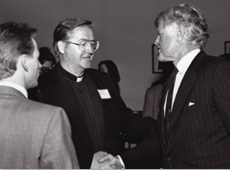Northern Ireland Assembly Results
Posted By: March 04, 2017
Assembly election: Sinn Féin toasts vote surge
The party has come within a seat of drawing level with the DUP, which came into the election with 10 more seats.
Only 1,168 first preference votes separated the two parties and, for the first time, Unionists will not have an overall majority at Stormont.
Amid the fallout, Mike Nesbitt said he would resign as Ulster Unionist leader.
The election was called after the collapse of a coalition led by Arlene Foster’s DUP and Sinn Féin’s Martin McGuinness.
Sinn Féin and the DUP now have three weeks to establish a government: Under Northern Ireland’s power-sharing agreement, the government must be run by Irish nationalists and unionists together.
If a government cannot be formed within that time then, under law, another election will be called.
Ultimately, if no power-sharing government is formed, devolved power could return to the UK parliament at Westminster for the first time in a decade.
However, Theresa Villiers, a former Northern Ireland secretary of state, said that the UK government could legislate to give the DUP and Sinn Féin more time to negotiate or to introduce of direct rule.
“It’s not an outcome that the UK government would want, I think that every effort will be made to try and support the parties in finding a way forward,” said the Conservative MP.
“But, ultimately, if at the end of three weeks they haven’t (agreed), then legislation is one option to give them more time or to return to direct rule.”
David Trimble, a former Ulster Unionist Party leader who also served as the first minister of Northern Ireland, has suggested the parties would need more time to find agreement.
“If there isn’t an administration put in place then the Secretary of State for Northern Ireland is on a legal obligation to dissolve the assembly and have another general election, which I doubt will get us anywhere.”
High-profile casualties
A total of 64.8% of the electorate voted in the second Assembly election in 10 months – the highest turnout since the vote which followed the 1998 Good Friday Agreement and up 10 points on last May’s vote.
The election saw Mrs. Foster, Sinn Féin’s northern leader Michelle O’Neill, Alliance Party leader Naomi Long and SDLP leader Colum Eastwood are among those elected.
Mike Nesbitt won his seat at the Strangford count but shortly afterward, he announced that he was to stand down as Ulster Unionist leader following his party’s poor performance.
Indicating that he will remain in position until his successor is found, he said his real regret was that Northern Ireland’s society appeared to have emerged from the election more polarized.
“Some day Northern Ireland will vote as a normal democracy,” he said. “We will vote in a post-sectarian election, but it’s now clear it will not happen during the duration of my political career.”
While Mr. Nesbitt held his Assembly seat, other high-profile MLAs were not so lucky.
The SDLP’s Alex Attwood, the UUP’s Danny Kennedy, and the DUP’s Nelson McCausland and Lord Morrow were four former executive ministers who failed to secure a return to a Stormont legislature that is being cut from 108 to 90 members.
Other casualties include the UUP’s Jo-Anne Dobson, former DUP minister Jonathan Bell, who stood as an independent, and People Before Profit’s Eamon McCann who was elected as an MLA last May but lost his seat in Foyle.
Mr. McGuinness resigned over Mrs. Foster’s refusal to step aside as the first minister pending an inquiry into the Renewable Heat Incentive (RHI) scheme, which could cost the Northern Ireland taxpayer £490m.
A total of 1,254,709 people were eligible to vote for 228 candidates competing for 90 seats in 18 constituencies.










